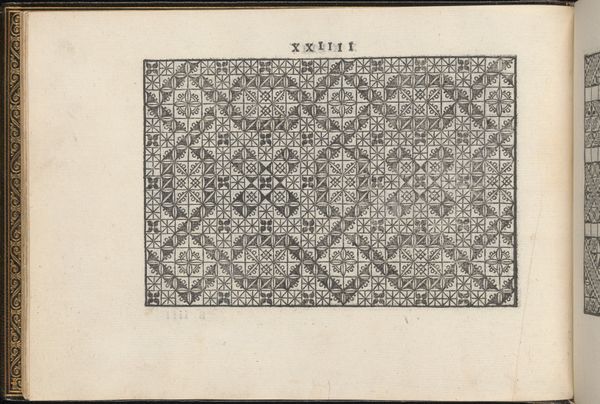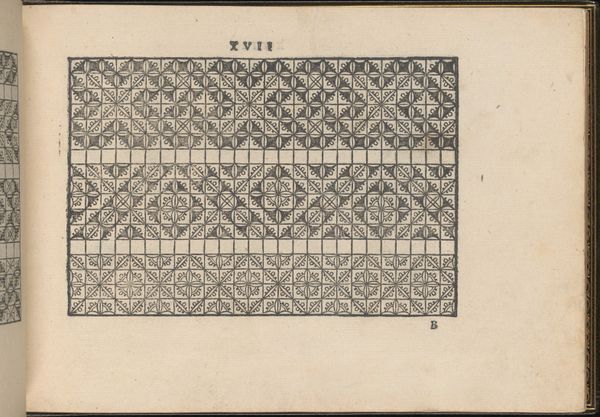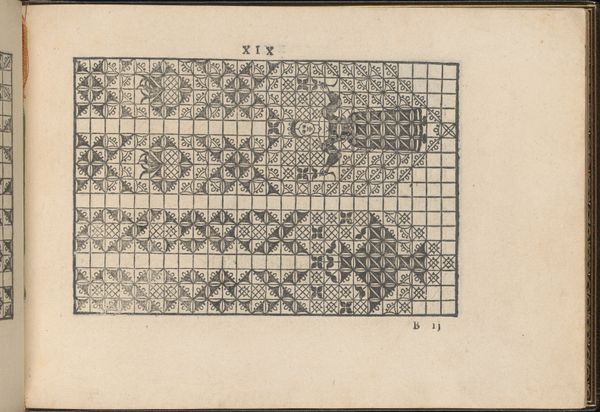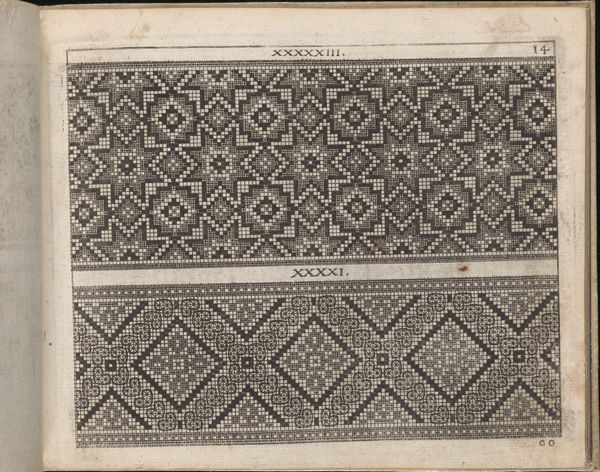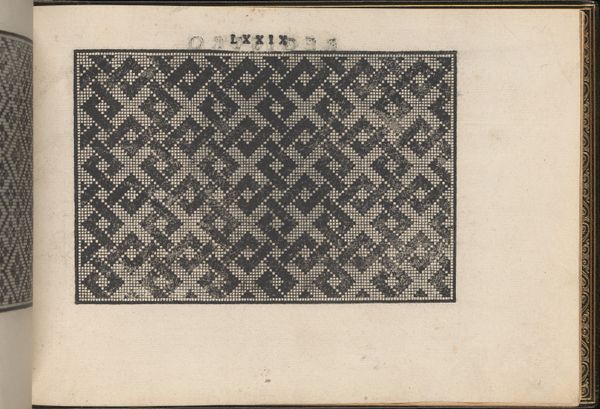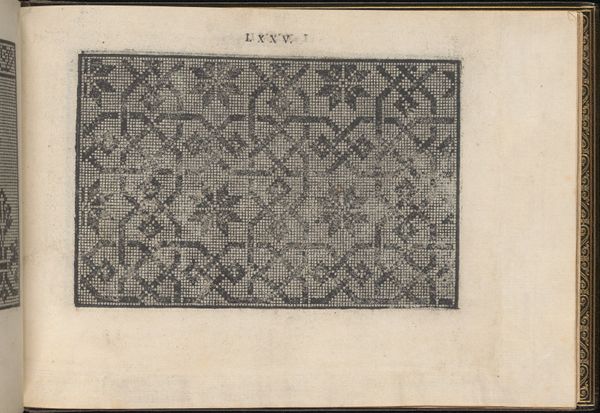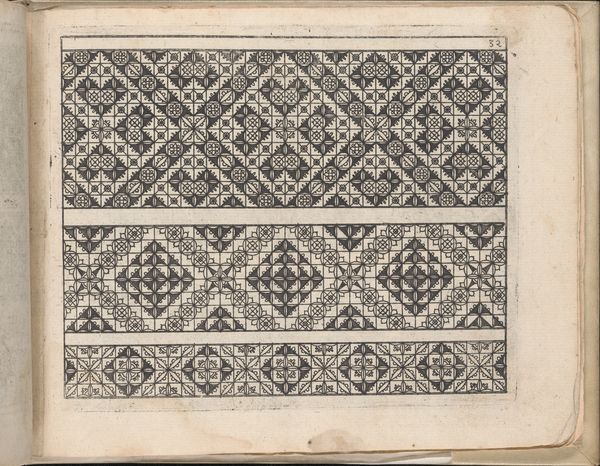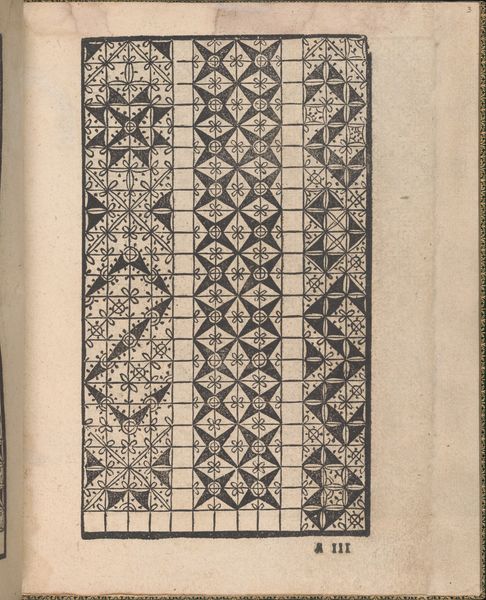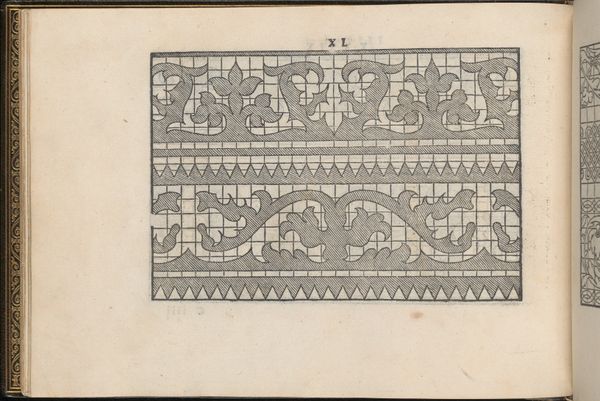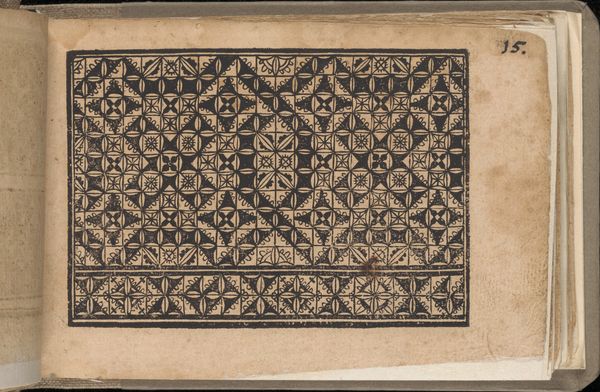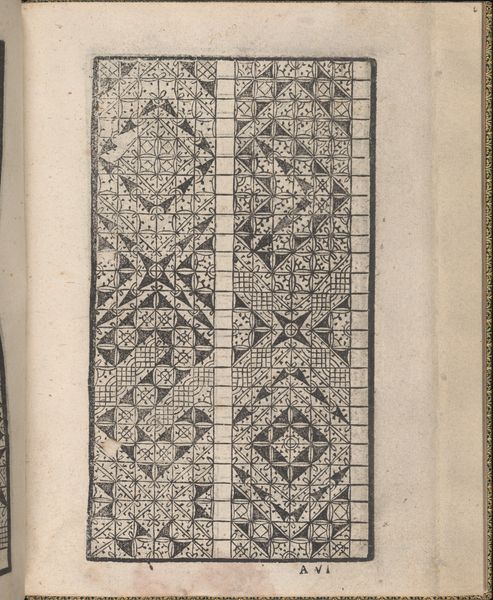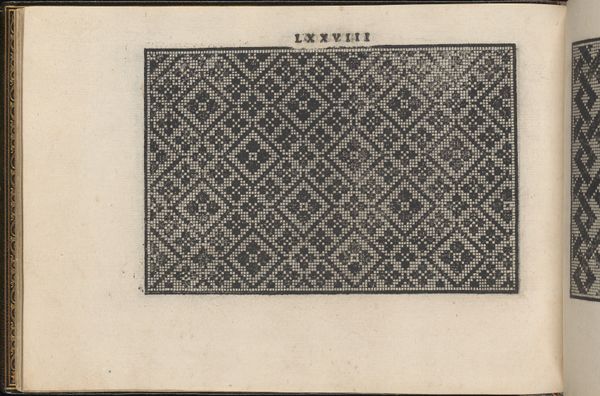
La Vera Perfettione del Disegno di varie sorti di recami, page 12 (recto) 1567
0:00
0:00
drawing, graphic-art, ornament, print
#
drawing
#
graphic-art
#
ornament
# print
#
11_renaissance
#
geometric
Dimensions: Overall: 6 5/16 x 8 7/16 in. (16 x 21.5 cm)
Copyright: Public Domain
Curator: This meticulous geometric design really holds my attention. It almost feels meditative. Editor: Indeed. What we're viewing is plate 12 from "La Vera Perfettione del Disegno di varie sorti di recami," dating back to 1567, currently housed at the Metropolitan Museum of Art. The piece is attributed to Giovanni Ostaus, and consists of drawing and graphic art focused on ornamentation. Curator: Ornamentation, yes, but beyond mere decoration. Patterns like this in 16th-century Italy, weren't simply about beauty; they were about power, status, and demonstrating an understanding of mathematical principles and order. Consider the textile industry blooming during this time! The ability to translate such complex geometric designs into fabric would be seen as quite remarkable. Editor: Absolutely. Pattern books like these acted as a crucial resource for artisans and reflected a shift towards more intricate designs driven by increased patronage and competition among the crafts. We might analyze this from the vantage point of material culture: how does this reflect broader access and visual literacy through printing? Curator: That focus on textile is essential. It’s also important to consider that it’s likely needlework being depicted in the title. Who were the producers and consumers of the embroideries and the pattern books in general? Gender plays a huge role. Editor: It's interesting that the precise, repeating shapes—squares and leaf shapes mostly, almost evoke a sense of manufactured sameness, yet it was intended for unique crafted items. Ostaus is dealing with an emerging tension there. I'd be curious how its patterns impacted fashion of the time and its connection to political identity of its wearers. Curator: A fascinating tension! As for today, I see possibilities here for examining the dynamics between geometric principles, aesthetic trends, socio-economic structures and, crucially, human labor through such designs. We cannot underestimate the socio-cultural impacts and significance such artifacts and their influence holds, even now! Editor: A stimulating reflection. For me, exploring the historical reception of this piece opens compelling insights into the ever-evolving role and function of art across history.
Comments
No comments
Be the first to comment and join the conversation on the ultimate creative platform.
